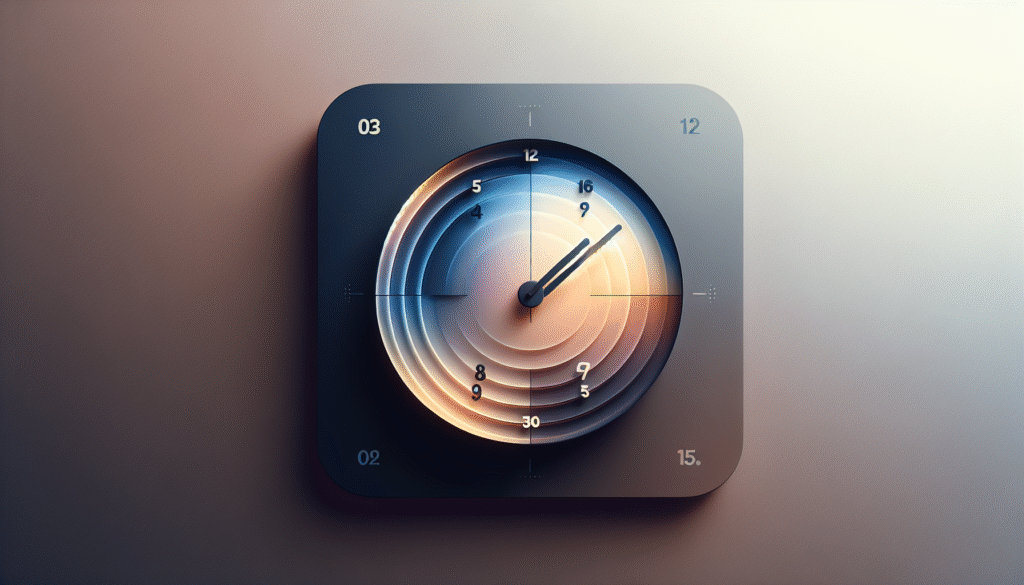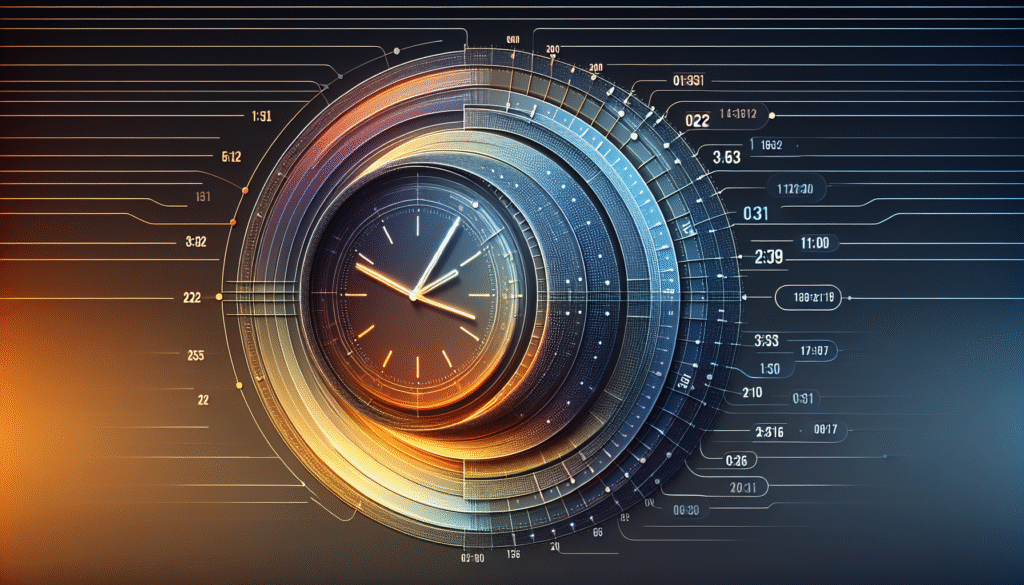Have you ever wondered why some times of the day seem more productive than others, especially when it comes to converting leads or making a sale? It’s like finding the sweet spot for a perfect cup of coffee—get the timing right, and everything just clicks. We, too, have pondered this conundrum and set out on an enlightening journey to uncover the best hours of the day to achieve those much-coveted conversions. Drawing on comprehensive lab results and a sprinkle of humor, let’s explore what the data has to say.

Understanding the Basics: Why Timing Matters
Before we dive into the specifics, let’s consider why timing plays such a critical role in conversion rates. Picture this: you’re trying to convince someone to invest in your revolutionary, life-changing product, but they’re caught in traffic and running late to a meeting. Not exactly the best time to capture their attention, right? Timing can be everything, and understanding the rhythms of your audience’s day is crucial in ensuring your message hits home.
The Science Behind Daily Rhythms
We all operate on a circadian rhythm, guided by the natural cycles of light and darkness. These rhythms influence our energy levels, mood, and yes, even our decision-making processes. By tapping into these natural patterns, we can better align our marketing efforts with the times when our audience is most receptive. So, let’s break it down and see how timing aligns with these inherent daily cycles.
The Early Bird vs. The Night Owl: Who’s More Likely to Convert?
Now, let’s get to the meat and potatoes of our investigation: what are the best times of day for conversions? It turns out, not all hours are created equal.
Morning Conversions: A Bright Start
Mornings, often seen through the metaphoric lens of a fresh start, hold a special place in the daily cycle. For many, the morning is when focus is sharpest and the mind is freshest. Statistics show that emails sent between 9:00 AM and 11:00 AM tend to have higher open and conversion rates. Why? We’ve just fueled up with breakfast, the caffeine from that cup of coffee is kicking in, and we’re generally more inclined to take action.
But, it’s not just email marketing that benefits from the morning magic. Retail and online shopping platforms also see a significant uptick in engagement during these early hours. It’s like shoppers wake up and think, “You know what I need right now? A new toaster.”
Afternoon Advantage: When Indulgence Peaks
By afternoon, the day’s tasks are steadily progressing, and people often find themselves in need of a break. Considerably, post-lunch laziness might lead us to indulge in some online browsing or social media scrolling. Interestingly, conversions tend to spike again between 1:00 PM and 3:00 PM. Picture this—a slight lull in energy calls for a distraction, and what better way than to shop or engage with promotions.
Afternoon spikes might just be what we need to refocus, making these hours prime real estate for marketers and salespeople.
Late Night Logistics: A Surprising Spike
It’s easy to assume the evening is reserved for relaxation and unwinding. Yet surprisingly, from about 8:00 PM to 11:00 PM, there is yet another peak in conversion rates. Perhaps it’s the quiet of the night or the satisfaction of having made it through the day, but decision-making faculties reignite. This period is particularly useful for targeting night owls who find solace in nighttime solitude for personal decision-making.
Whether it’s a spontaneous purchase or subscribing to a new service, the night holds its charm for conversions.

Crunching the Numbers: Analyzing the Data
Numbers don’t fib; they provide the backbone for all our assumptions and hypotheses. Take a look at the table below, which encapsulates conversion rates across different times of the day based on various studies:
| Time Slots | Conversion Rate (%) | Notable Patterns |
|---|---|---|
| 6:00 AM – 9:00 AM | 12% | Early risers are keener on significant decisions after a good night’s rest. |
| 9:00 AM – 11:00 AM | 18% | Peak email opens and retail engagements—morning magic at work. |
| 11:00 AM – 1:00 PM | 14% | Pre-lunch engagement, slightly decreasing but still high. |
| 1:00 PM – 3:00 PM | 17% | Afternoon peaks provide a distraction from work or tasks. |
| 3:00 PM – 5:00 PM | 13% | Post-snack and pre-commute lull, lesser engagement. |
| 5:00 PM – 8:00 PM | 11% | Dinnertime dive as people focus on family and personal time. |
| 8:00 PM – 11:00 PM | 15% | Night owls and late deciders rekindle their drive. |
This data showcases the oscillating nature of how we engage with content and make purchase decisions over the course of a day.
Optimizing Strategies Based on Time Slots
Having this rich tapestry of data is one thing; applying it is another. Here’s how we can optimize our strategies based on these insights.
Tailoring Messages for Morning Success
Mornings are golden for informational and analytical content. It’s when our audience is more inclined to digest data, plan, and execute. Therefore, delivering value-driven, high-impact content at this time can be particularly effective. Prioritizing products or services that cater to professional needs may increase the likelihood of conversions. Also, deploying newsletters and marketing emails earlier in the morning can capitalize on the peak open rates.
Capturing Afternoon Attention
Afternoons provide fertile ground for motivational and engaging content. This could be the optimal moment for sending reminders about ongoing sales or enticing promotions. Interactive content, like quizzes or live sessions, also tends to capture attention well during this period. Engaging with audiences through social media posts or notifications can be especially powerful when accompanied by incentives.
Night-Time Nudges
When the sun sets, people often browse out of relaxation, seeking entertainment or self-indulgence. This is the right time to push leisurely, impulsive, or indulgent purchasing prompts. Utilizing bright visuals and storytelling might keep potential buyers engaged longer, leading to higher conversions.
Considering Variables: Industry and Audience Specifics
While our exploration provides general insights, it is important to remember that not all industries or audiences operate uniformly. Factors such as industry type, geographic location, and audience demographic must be taken into account.
Industry-Specific Timing
E-commerce platforms might see a different peak time compared to a B2B service provider. For example, beauty brands might experience higher conversions later in the evening when individuals indulge in self-care, while software companies might peak in the morning as businesses begin their operations.
Demographics and Geographic Considerations
Depending on the target demographic, time preferences can vary greatly. Younger audiences might engage more post-school or into the night, while professionals might engage during traditional working hours. Geographically, time zones significantly affect the optimal time for engagement, requiring tailored strategies for diverse markets.
Final Thoughts on Timing and Conversion Efficiency
Our foray into the best times for conversion highlights a fundamental truth: timing isn’t just an incidental factor; it’s an essential element of crafting effective messaging and strategy. While the data offers a promising roadmap, adopting a flexible, experimental approach can help us tailor our timing strategies to meet the unique needs of our target audience.
In summary, whether it’s capturing the early risers, the afternoon post-lunch browsers, or the late-night decision-makers, honing in on the times they’re most receptive can significantly enhance our conversion rates. So, let’s time our efforts wisely and watch the magic unfold as we connect with our audiences when they are most keen to listen, engage, and convert.
